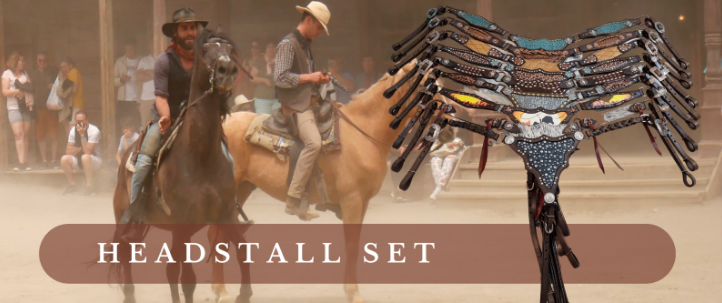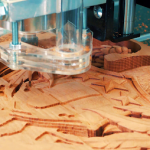The world of equestrian sports and horse riding enthusiasts is steeped in tradition, where every piece of riding equipment serves both functional and aesthetic purposes. Among these essential items, the leather headstall stands as a symbol of craftsmanship, comfort, and style. In this article, we will delve into the world of leather headstall, exploring their history, construction, and the reasons why they are cherished by riders and admired by enthusiasts around the globe.
The Heritage of Leather Headstalls
Leather headstalls, also known as bridles, have a rich history dating back centuries. They have evolved from simple tools of control to intricate pieces of riding equipment that reflect the artistry and heritage of horsemanship.
Functional Origins
Originally, leather headstalls were designed for one primary purpose: to control the horse. Early headstalls were rudimentary, often consisting of little more than a simple leather strap or halter. Riders used these basic tools to guide and manage their steeds during various tasks, from farming to warfare.
Artistic Transformation
Over time, as horse riding became more than just a mode of transportation or labor, leather headstalls underwent a remarkable transformation. Craftsmen began to infuse their designs with artistic flair, incorporating decorative elements that showcased both their skills and the rider’s status.
The Anatomy of a Leather Headstall
A leather headstall is a complex piece of riding equipment that comprises several essential components, each with its own unique function and significance. Understanding the anatomy of a leather headstall is crucial to appreciating its craftsmanship.
Browband
The browband, positioned across the horse’s forehead, helps keep the headstall securely in place. In addition to its functional role, the browband is often adorned with decorative elements, adding a touch of elegance and style to the bridle.
Crownpiece
The crownpiece is the part of the headstall that sits behind the horse’s ears and connects the browband to the cheekpieces. It plays a vital role in distributing pressure evenly to ensure the horse’s comfort.
Cheekpieces
Cheekpieces run down the sides of the horse’s face, connecting to the bit. They play a crucial role in controlling the horse’s head movements and facilitating communication between rider and steed.
Throatlatch
The throatlatch is a strap that fastens under the horse’s throat. Its purpose is to keep the headstall securely in place and prevent it from slipping over the horse’s head.
Bit
The bit is a key element of the headstall, as it goes into the horse’s mouth and allows the rider to communicate commands. The choice of bit depends on the specific needs and preferences of the rider.
Craftsmanship: The Heart of Leather Headstalls
What sets leather headstalls apart is the meticulous craftsmanship that goes into their creation. Skilled artisans bring together their expertise in leatherwork and equestrian knowledge to produce headstalls that are both functional and works of art.
Selection of Leather
The quality of leather used is paramount. Top-grade, full-grain leather is often the preferred choice due to its durability and supple texture. This type of leather not only withstands the rigors of riding but also develops a beautiful patina over time.
Hand Tooling and Carving
Many leather headstall exporters feature intricate hand tooling and carving. Artisans use specialized tools to create patterns and designs on the leather, adding a unique and personalized touch to each piece.
Hardware and Embellishments
Craftsmen pay careful attention to the selection of hardware, such as buckles and conchos, to ensure they not only function smoothly but also complement the overall design. Embellishments, like silver or brass accents, are often added for a touch of opulence.
Stitching and Assembly
Precision stitching and assembly techniques are vital to ensure the headstall’s durability and longevity. Double stitching and reinforced stress points are common practices to enhance strength.
Customization
Many riders prefer customized leather headstalls tailored to their specific needs and preferences. Artisans often work closely with riders to create headstalls that not only fit perfectly but also reflect their individual style.
Comfort and Style in Harmony
The true beauty of leather headstall sets lies in their ability to seamlessly marry comfort with style. Here’s how they achieve this delicate balance:
Comfort
Leather, when well-maintained, becomes exceptionally supple and comfortable for the horse. It molds to the horse’s contours, reducing the risk of chafing or discomfort during rides. Additionally, the proper fit of a headstall ensures that the horse can move freely and comfortably.
Style
Leather headstalls are renowned for their timeless elegance. Whether adorned with subtle tooling or intricate designs, they elevate the rider’s aesthetic and complement the overall look of the horse and rider. Riders can choose from a variety of styles, from classic Western designs to English and dressage-inspired headstalls.
Conclusion: The Legacy of Leather Headstalls
In the world of equestrian sports, leather headstalls are more than just riding equipment; they are a symbol of heritage, craftsmanship, and a timeless connection between rider and horse. The dedication of artisans who meticulously craft these pieces ensures that they not only serve their functional purpose but also stand as works of art that continue to be cherished by riders and admired by enthusiasts worldwide. So, the next time you see a beautifully crafted leather headstall, take a moment to appreciate the harmony of craftsmanship, comfort, and style that it represents in the world of equestrianism.









